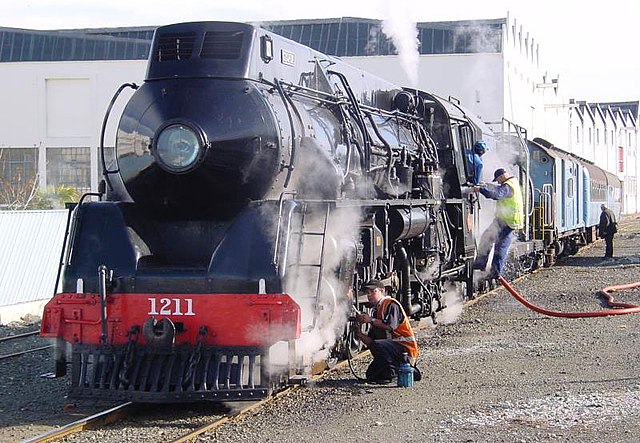The British Rail Class 22 or "Baby Warship" was a class of diesel-hydraulic locomotives designed for the Western Region of British Railways and built by the North British Locomotive Company. They were very similar in appearance to the Class 21 diesel-electrics, although shorter in length by almost five feet. The nickname Baby Warship related to the similarity in appearance to the British Rail Class D20/2 or Class 41 Warship Class. The Class 22s were numbered D6300-D6357.
A Class 22 at Old Oak Common, 1965
North British Locomotive Company
The North British Locomotive Company was created in 1903 through the merger of three Glasgow locomotive manufacturing companies; Sharp, Stewart and Company, Neilson, Reid and Company and Dübs and Company, creating the largest locomotive manufacturing company in Europe and the British Empire.
GNR No. 1744 maker's plate
Mainline Steam New Zealand locomotive, NZR J class No. 1211. (NBL 24534 of 1939)
NBL works plate on LNER B1 No. 1264 (NBL 26165 of 1947). The diamond shaped plate was fitted to locomotives built at the company's Queen's Park Works in Polmadie, a continuation of a tradition started by Dübs and Company.
Former headquarters of NBL in Springburn, Glasgow. During World War I the building was temporarily converted into a hospital by the British Red Cross. It was latterly the campus of North Glasgow College.





